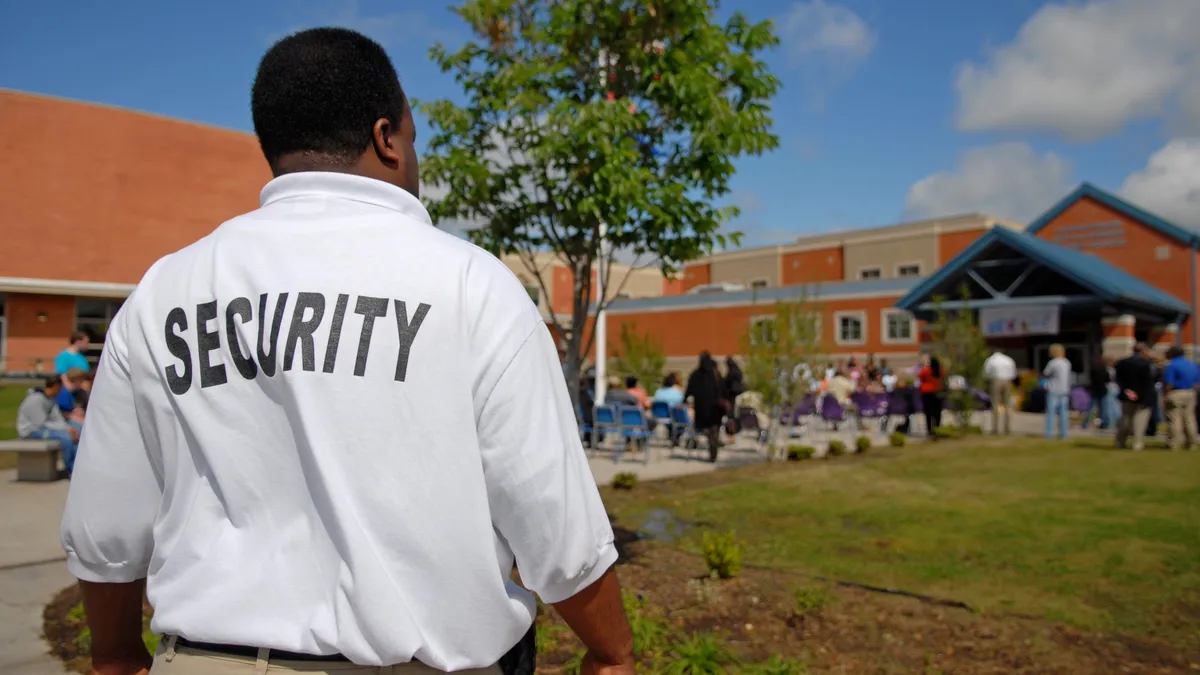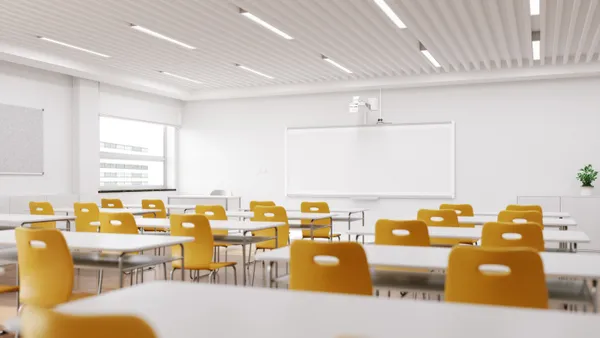Dive Brief:
- Johns Hopkins University earlier this month opened its Center for Safe and Healthy Schools to provide better education and research related to school safety issues, using a cross-disciplinary approach that draws on the expertise of professors in the fields of public health, engineering, arts and sciences, and medicine in addition to education, Education Week reports.
- The center will work to provide better education for school leaders, counselors and teachers by incorporating core courses on school safety into preparation programs, offering a series of lectures and discussions on the topic based on real-world scenarios, and launching a micro-credentialing program next spring that will allow educators nationwide to access courses on school safety.
- The center will also conduct and gather research to help educators make better-informed decisions about what approaches work best for their situation — with a focus on health and wellness, security and technology, and school and community engagement — while weighing the needs of the school as a whole, the long-term effects on students and the best ways to spend school security grant dollars.
Dive Insight:
The issue of school safety has increased significantly in priority since the Columbine shooting in 1999 made the world — and potential future school shooters — aware of the impact of attacking students when they are at their most vulnerable position and in a place where they should feel safe. After a tragic spate of school shootings in 2018 and more incidents this year, school safety has become an even greater focus of concern.
The two-pronged approach Johns Hopkins is taking seems reasonable. The university recognizes the need for more training and more research around the issue. While some training for teachers is helpful, the need for school safety education is even more necessary for administrators, who are concerned about students and school liability; for counselors, who need training in recognizing warning signs; and for school resource officers, who often carry weapons while working with students and need instruction on proper attitudes and responses. Some states are already recognizing the need for more instruction, with around 1,000 administrators and educators recently attending the Indiana School Safety Specialists Academy.
As far as research goes, many organizations have also already explored school safety issues and produced reports on the issue from many different perspectives. The National Association of School Psychologists has produced a school violence prevention guide, while Community Matters has its own guide to safer schools. The NEA offers a school safety resource guide, while the Heritage Foundation suggests its own school safety initiative from a more conservative point of view. The federal government additionally convened its own safety commission last year, recommending more armed school personnel and expanded mental health services, the latter idea being common to many plans. Meanwhile, the Educator’s School Safety Network is already offering resources and training for educators.
But many of these reports raise even more questions. Should teachers be armed? What impact do gun laws play in school violence? Does target hardening make students feel safer or more like they are in prison? What effect do school security measures have on bullying? What role does technology play? Where do ESSA regulations fit in? And what is the best way to spend school security funding?
Schools often make security decisions based on parental fears, local law enforcement recommendations or pitches from school security firms. Ultimately, there are a lot of aspects that need to be considered, and there is certainly room for more research and training on the issue.














